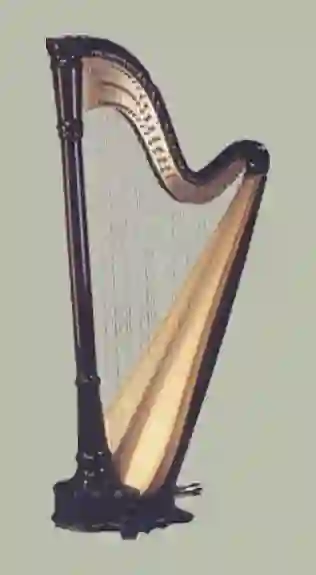Historical development of the Harp - Philipp Dangas
Historical development of the Harp
The harp is among the oldest musical instruments and the earliest to be perfected. The ancient Egyptians used them as bow harps or angle harps. The Assyrians, Jews, Greeks and Romans also used the harp in early antiquity.
Today's harp is, in terms of structure and sound, the same instrument as the ancient Egyptians used. It differs from these old instruments only in improvements based on the development of technology, i.e. more strings and the resulting front rod, and above all in the possibility of changing the tuning of the strings using the pedals.
In Europe, the harp first appeared in Scandinavia. The Scandinavians brought triangular harps to England and Ireland. From there, as Chitara anglica, it came to mainland Europe, initially to Central and Southern Europe. The medieval harp was still very small and had few strings. The harpist Hochbrucker from Augsburg invented the pedal harp in Donauwörth. The problems associated with Hochbrucker's pedal harp were eliminated by the piano and harp maker Sébastien Erard (1752-1831) by inventing the so-called double harp in 1810. This Erard double-pedal harp is the modern orchestral harp.
Download size: 60.4 kilobytes
Table summary of the use of the harp in music
The table below shows the use of the harp in music shown. Musical works are performed with the name of the composer and the work.

The harp in large scale
The harp is a stringed instrument. To the subgroup of plucked instruments. It is one of the oldest musical instruments known to man. The harp can be traced back to around 3000 BC in Mesopotamia and Egypt.
The concert harp, the largest of its kind, is around 180 cm high and weighs up to 40 kg, making it one of the largest and heaviest orchestral instruments.
Internal search function
| Name | Value | Delete |
|---|